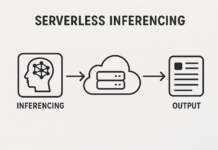When you think of chlorine, perhaps you might be reminded of swimming pools, paint or cleaning products. Only a few know, chlorine also exists in the water that runs in our homes. Be it for bathing, drinking, or cooking; we all consume chlorine in some or the other way. Well some of you might ask, why is chlorine added to the water anyway?
Chlorine is a strong disinfectant that kills bacteria, viruses, and other pathogens in your water. And let’s admit, it does a pretty well job in killing all the germs from the water. The water treatment plants and the municipal councils employ this method of ensuring clean water in the water supply.
But is drinking chlorinated water safe?
According to a report from US Environment Protection Agency (EPA), consumption of chlorinated water increases the risk of cancer by 93%. The same report also suggests that Americans are now drinking 300-600 times the amount of chlorine that is safe to ingest.
Most of us have experienced that sicky feeling after being in a swimming pool for too long. That’s simply because consuming only a little water while you’re swimming allows chlorine to slip into your stomach causing severe pain and even lead to diarrhoea.
Chlorine mixes with other organic compounds present in water to form Trihalomethanes commonly known as THMs. These compounds release free radicals in the body which can lead to cell damage and are highly carcinogenic. There has been research on the impact of chlorine on human health and scientists regularly link chlorine consumption to various cancers, heart attacks, and a weakened immune system. A research published in Environment Health Perspectives clearly links chlorine in drinking water to higher incidents of bladder, rectal, and breast cancers. A study conducted in Connecticut found higher levels of organochlorines (chlorine by-products) in women suffering from breast cancers.
While there are regulatory limits set on the amount of chlorine to be added in the drinking water, over the time, the body gets used to it. It is therefore, of extreme importance, to monitor the levels of chlorine in your water supply. It is also worthwhile to note that water treatment facilities don’t test water on a regular basis. If you live in a densely populated area with poor quality source water, the water is probably tested every day. However, if you live in a mountainous region, your water could be getting tested once a week or once a month. So, there could have been instances wherein you might have consumed excessive chlorine levels.
What to do in that case?
It is important to ensure that the water you are consuming should have safe levels of chlorine. The most easy and cost-effective way to ensure you are drinking clean and pure drinking water is to get a water filter installed. There are many filters out in the market which can do the job for you. However, it is critical to check the specification sheet of the filters before you decide to purchase them. If you are unsure about the quality of water in your area, it is best to get a comprehensive water test done first, to understand what you are drinking.
If you don’t have any other contaminants in your water, only a chlorine filter will suffice. However, if your water supply is from a low-quality water source, such as a private well, you might be better off with installing a more specialized water treatment system. If you are on a public supply, a reverse osmosis water filter would be the best option.























































